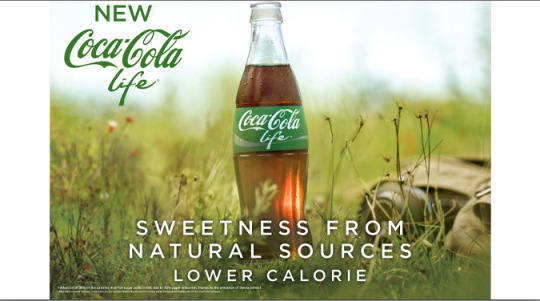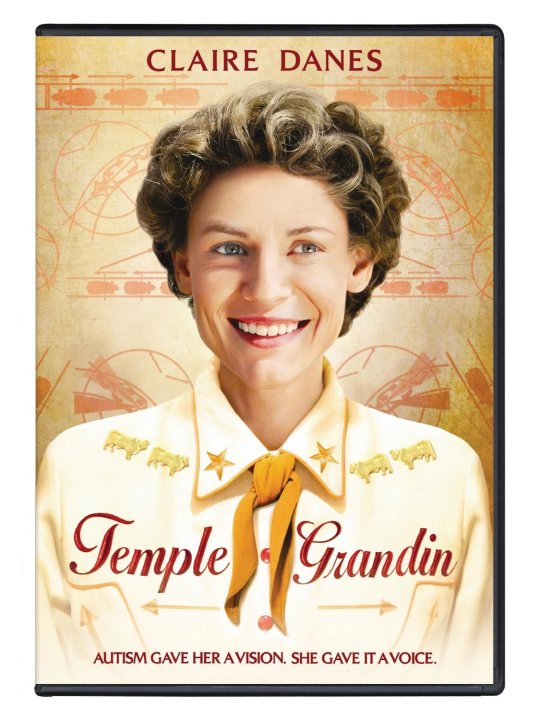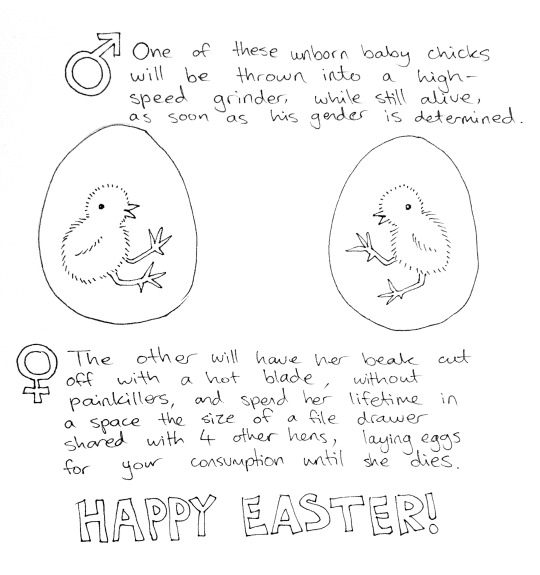Don't wanna be here? Send us removal request.
Photo

Today I saw ‘Coke Life’ in the supermarket for the first time and it made me so angry. Just because you slap a green label on something that doesn’t necessarily mean it’s any better for you or for the planet.

Then again, the marketing works. I myself am instinctively drawn to green things. Or things which claim to be green, eco-friendly, etc.
Maybe it’s just about colour associations. Maybe the reason I bought my plastic green iPhone cover was because somehow, on some weird subconscious level, the colour green made me feel like it was a good choice. Green man says go!
So seeing these coke bottles brought this thought process to light as being obviously and absurdly ridiculous. Because I’d still never drink coke in any of its forms, whether original, zero, diet, or ‘life’ - I simply won’t touch anything that processed. But ‘coke life’ is directly targeted at health-conscious people like me.
I felt targeted, dissected, exposed. They’ve figured out that to pull us green-smoothie-and-yoga suckers in: all we need to see are the words ‘natural’ / ‘reduced sugar’… but most importantly, of course, green packaging with a picture of a plant on it. It’s that simple.
“The devil hath power to assume a pleasing shape...”


I’ve been thinking a lot about labels like these that we get bombarded with, and which appeal to those of us who fancy ourselves as conscious-consumers, i.e. who are willing to fork out an extra few dollars for something if we see it has a ‘green’ label of some sort because it makes us feel better about ourselves. Excuse my cynicism; I still do it.
But how many of us are really informed about what any of these actually indicate? And how many of these labels actually mean effective change? How many of them are as fake and empty as coca-cola’s new claims?
2 notes
·
View notes
Photo

Some kind soul left this DVD on my desk last week.
Grandin, who has autism, ���is Professor of Animal Science at Colorado State University, and is one of the world’s leaders in the design of livestock handling facilities. She has designed livestock facilities throughout the United States and in Canada, Europe, Mexico, Australia, New Zealand and other countries. In North America, almost half of all cattle processing facilities include a center track restrainer system that she designed for meat plants. Her curved chute (race) systems are used worldwide and her writings on the flight zone and other principles of grazing animal behavior have helped many producers to reduce stress during handling.” - Grandin Livestock Handling Systems
Quotes from the film:
Of course they're gonna get slaughtered. You think we'd have cattle if people didn't eat 'em everyday? They'd just be funny-lookin' animals in zoos. But we raise them for us. That means we owe them some respect. Nature is cruel, but we don't have to be. I would'nt want to have my guts ripped out by a lion, I'd much rather die in a slaughterhouse if it was done right.
They'll be very calm. Nature is cruel but we don't have to be; we owe them some respect. I touched the first cow that was being stunned. In a few seconds it was going to be just another piece of beef, but in that moment it was still an individual. It was calm... and then it was gone. I became aware of how precious life was. I thought about death and I felt close to God. I don't want my thoughts to die with me. I want to have done something.
‘Nature is cruel, but we don’t have to be’
After watching the movie I also enjoyed listening to her Ted Talk about autism and different kinds of thinkers - visual, pattern, and verbal [click here].
You know, the slaughter plants, I've worked with them in the '80s; they were absolutely awful. I developed a really simple scoring system for slaughter plants where you just measure outcomes: How many cattle fell down? How many cattle got poked with the prodder? How many cattle are mooing their heads off? And it's very, very simple. You directly observe a few simple things. It's worked really well. I get satisfaction out of seeing stuff that makes real change in the real world. We need a lot more of that, and a lot less abstract stuff.
3 notes
·
View notes
Photo


Documentation: weeks 5-6
The transparent sheets used to produce the previous painting - including scraps from the screen printing room, glad wrap bags from my lunchbox… - aligned and layered on the wall.
0 notes
Photo


Documentation, weeks 5-6:
A test, trying to combine painting with screen printing. I colour-blocked the original photo [which can be seen here] by tracing over specific colour areas on a plastic sheet, which were then projected one at a time onto the canvas with an OHP projector, and I would directly paint over the shadows.
This colour-block layering resembles the process of screen printing - the slight differences in the position of the easel, transparency, and projector, resulted in some mis-registration. I’m happy with the outcome but I’d like to try it again with more transparent paint so the layering process is more evident, perhaps with watercolours.
This is an image of the braided river in the Canterbury Plains. Since the Tuakana trip in 2014 I’ve been thinking a lot about Fonterra’s policy of only buying milk from dairy farms where the cows are fenced off away from the river ways, a move which is imperative to the health of the rivers and the species that live in them, but which is ignored by many farmers. And no such guidelines are enforced with livestock cattle. Hence the problem of polluted rivers...
0 notes
Text
Almonds
This article caught my attention in the weekend: NZ Herald: “Shaming the almonds…”
It takes one gallon of water to grow one nut.
BUT, so did this one: LA Times: “Are almonds and other nuts really drought villains?”
So how do nuts stack up to meats? When comparing the global average water footprints, nuts overall have a far lower water footprint when looking at per ton and calorie rates, especially when compared with beef, according to a report on the water footprint of animal products which you can download in full here. Replacing all meat by an equivalent amount of crop products such as pulses and nuts will result in a 30% reduction of the food-related water footprint of the average American citizen," water experts and authors of the report, Mesfin Mekonnen and Arjen Hoekstra say.
0 notes
Photo



Chiara Lecca’s sculptures in ‘Art & Ecology Now’
Dutch: “Still life” = stilleven = “life stilled”
Romantic languages: “Dead nature”
I find the human-animal connection full of paradoxes, but the attempt to understand animals is necessary to truly understand ourselves. Indeed it’s this kind of relationship I’m interested in, and man tends to divide it into categories - pets, barnyard animals, animals to be eaten, to be used for clothing or furnishings - and doesn’t consider its complexity.
Brown, Andrew. Art & Ecology Now. London: Thames & Hudson Ltd, 2014.
2 notes
·
View notes
Photo

Documentation: weeks 5-6
Final painting/sketch in this series: rabbit & possum, stoat & rat & cat.
‘The Whangarei Kiwi Sanctuary Study from 2000-2005 showed dogs were responsible for 42 % of kiwi deaths including 69 % of adult kiwi deaths.’
Department of Conservation website: New Zealand animal pests and threats
1 note
·
View note
Photo

Documentation: Weeks 5-6
The Animal or the Food? Pencil drawing. A2.
Later version of this idea.
Details:


1 note
·
View note
Link
The Great Easter Bunny Hunt is an annual event for Central Otago, organised by the Alexandra Lions Club. Now in its 24th year, the Easter cull was hatched as a way to help out farmers - New Zealand Herald
A media repeat of the Hell’s Rabbit Pizza billboard around this time last year (which was accompanied by posters reading ‘Lost - pet bunny’ and ‘Found bunny rabbit - was delicious’)
I’m fascinated by the complicated way we see rabbits. A pest? A pet? A food? No other animal I can think of falls so perfectly within all of those categories.
0 notes
Link
Intermarché launched Inglorious Fruits and Vegetables to highlight the absurdity of throwing away perfectly edible produce due because they don't look 'perfect.'
This is amazing.
1 note
·
View note
Link
Each week the contents of our weekly rubbish bins contain a large amount of food waste. Some of this can’t be avoided, such as tea bags and orange peels. But much of it can be – in fact 25% of the contents of our garbage bins is made up of avoidable food waste – food that was purchased with the intention of being eaten but was instead discarded. Love Food Hate Waste is a campaign that aims to raise awareness about avoidable food waste.
This is all very well, and it is very important that we all try to reduce food waste in our own homes, but what about all the large corporations - cafes, bakeries, supermarkets - that throw out MASSIVE amounts of perfectly edible food on a daily basis? And, in some cases, lock up their skip bins so that no one can benefit?
It’s the equivalent of individuals making small efforts to conserve power and water - turning off the lights when we leave the room, or turning off the tap while brushing our teeth, or taking the bus instead of driving - efforts which fade into insignificance in comparison to the extravagant energy + water + oil/gas consumption of large industries and corporations. What can we do?
0 notes
Video
youtube
Jenny Saville



0 notes
Photo








Bettina Van Haaren
2 notes
·
View notes
Link
GERMANY - On a recent visit to the University of Leipzig to review the latest research there, the agriculture minister has called for a practical method to determine the sex of chicken embryos in order to bring to an end the culling of male layer chicks by the end of 2016. Mr Schmidt said that, by the end of 2016, there should be prototypes of a device that determines the sex of chicken embryos at just three days of incubation and then sorts the eggs automatically by gender. He added that, when such a device is available on the market, there will be no need for the nation's hatcheries to kill male chicks, a practice that will soon belong in the past.
In the meantime...

0 notes
Link
The Government has relented to a campaign to ban animal trials for the second time in a year, this time within the cosmetics industry. - New Zealand Herald
0 notes
Link
Peter Singer, the groundbreaking ethicist whom The New Yorker calls the most influential philosopher alive teams up again with Jim Mason, his coauthor on the acclaimed Animal Factories, to set their critical sights on the food we buy and eat: where it comes from, how it is produced, and whether it was raised humanely. The Ethics of What We Eat explores the impact our food choices have on humans, animals, and the environment. Recognizing that not all of us will become vegetarians, Singer and Mason offer ways to make healthful, humane food choices. As they point out: You can be ethical without being fanatical.
0 notes
Text
Can your grocery shop really save the world?
“Ethical shopping: The price of goodness” NZ Herald article by Andrew Laxon
Food campaigner and former Green MP Sue Kedgley says the fact ethical products are now everywhere on supermarket shelves shows the market is changing but the amount is still up to shoppers."Vote with your wallet, vote with your fork. Whenever you buy something you can be sending a message to food producers about the sort of food you want to buy."
0 notes